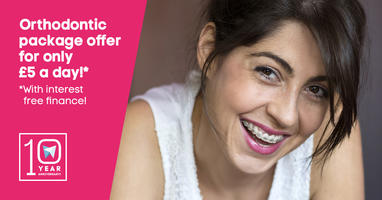Adult orthodontry is a completely different game than traditional orthodontics, which is usually reserved for young adults growing in their second molars. Adults now make up a full one third of all orthodontic patients worldwide, which is quite crazy, as until now they represented a small fraction of orthodontic patients. The problems that come along in adulthood are different, and the solutions and complications are also different. Here are some problems that usually occur in adults, or are unique to adult orthodontics.
Treatment time
Treatment time is typically longer in adults for the same treatment. The bones and the alveolus are much more ossified, the immune system is more developed, and the inflammation that softens up the alveolus is harder to obtain in adulthood. This is balanced by the fact that adults usually request more minor treatments. The overwhelming majority are small corrections for problems like crowding or a cross bite, which do not take as long as corrective orthodontics or palatal extension.
Aesthetic considerations
Some adult patients are in a position where they cannot have a traditional brace because it may be incompatible with their work. With young adults, braces can ruin your popularity amongst a shallow cohort, but really, once your smile straightens out, you are in the clear. With adults, braces may not be an option, the person may need to make public speeches, speak to people in whose culture braces are not worn by adults, or other such considerations. But aesthetic braces cost significantly more than regular braces, and this is one of the biggest problems in adult orthodontics.

Gum issues
The gums of adults are more worn, more damaged, and have more bacteria in them than the periodontium of children and young adults. This can make the gums swell and bleed more than with kids. With this increase in damage there may also be an increase in pain, making the treatment less comfortable.
Missing teeth
There are more instances of missing teeth or teeth reduced to stubs and wearing crowns in adults than in young adults, and this is understandable. This can be a problem, but can also make the treatment easier, depending on what kind of treatment you are getting and what sort of malocclusions you are correcting.
Damaged teeth
Teeth that have been around longer will show more signs of caries, damage, and wearing of the enamel. These teeth may become inflamed and painful when the brackets go on. This is because some enamel may be missing, or the walls of the teeth may have become thinner over time and the dentine may be exposed.
Fortunately, few of these problems should stop adults from considering orthodontics. Knowing what to look out for can go a long way towards prevention.
image: 1.

